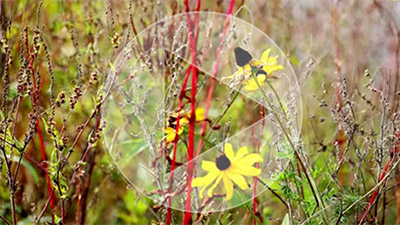American Society of Civil Engineers Recognizes Significant Contribution to Civil Engineering Progress and Society
The American Society of Civil Engineers (ASCE), Syracuse Section, recognized Honeywell on March 23 with the 2015 Outstanding Civil Engineering Achievement Award for the remediation and restoration of Geddes Brook and Nine Mile Creek.
Honeywell and its contractor Parsons transformed the 44 acres of the Onondaga Lake watershed into a diverse new habitat for wildlife. The area, part of a green corridor connecting habitat from Onondaga Lake to upland sites, is home to hundreds of plant, fish, and wildlife species, including pied-billed grebes, bald eagles, wood ducks, bullfrogs, and mink.

Left: Nearly 250 native plant species were planted and 104 fish and wildlife species have been documented at the sites. Right: A section of Nine Mile Creek after restoration in August 2013.
The ASCE award honors “the project that best illustrates superior civil engineering skills and represents a significant contribution to civil engineering progress and society. Honoring an overall project rather than an individual, the award recognizes the contributions of many engineers.”
“The Geddes Brook and Nine Mile Creek remediation project includes innovation and originality, resourcefulness in planning and solving design challenges, sustainability, project planning and delivery, and contributions to the well-being of people and communities,” said Shaun Gannon, ASCE Syracuse Section president. “This balance of community and engineering is why the project has been selected as the ASCE Syracuse Section 2015 Outstanding Civil Engineering Achievement Award.”
Honeywell’s Geddes Brook and Nine Mile Creek teams, led by Parsons, seamlessly integrated remediation and restoration, creating innovative and sustainable habitat improvements. Through extensive investigations and planning, the team gained a thorough understanding of the site and wetland ecology, which was necessary for success. Real-time global positioning system measurements were taken to survey underwater construction, improving both efficiency and accuracy. Natural features, such as newly planted shrubs and trees, along with channels on the wetland perimeters, help limit the reemergence of invasive plants. Careful selection of native vegetation, reuse of timber and tree roots, and use of locally sourced materials improve the project’s sustainability.

Left: Geddes Brook wetlands during construction. Right: Geddes Brook wetlands after restoration.
“Thanks to the team’s thoughtful and creative planning, and hard work, Geddes Brook and Nine Mile Creek, once dominated by invasive plants, have been transformed into a diverse and flourishing wetland and stream habitat,” said John McAuliffe, Honeywell Syracuse program director. “We are proud to be recognized by ASCE for our contributions to civil engineering progress and society.”

Left: Nine Mile Creek during construction. Right: Nine Mile Creek after restoration.
“This award recognizes our local team’s expertise for the design and construction of a well-planned project,” said Paul Blue, Parsons Engineering project manager. “The team successfully restored critical habitat by integrating sound engineering principles and incorporating input from local habitat experts in an efficient and safe manner. The results have been exciting to see, and will have lasting benefits for the environment, ecosystem, and community long term.”

Left: Members of the Nine Mile Creek construction team. Right: John McAuliffe, Honeywell Syracuse program director (left) accepts the award on behalf of Honeywell. He is pictured with Craig Butler, ASCE Syracuse Section awards committee chairman and past section president.

Geddes Brook and Nine Mile Creek provided an opportunity for hundreds of community members to get involved in habitat improvements, becoming environmental stewards of Onondaga Lake through the Onondaga Lake Conservation Corps. Corps members have planted native plants and conducted citizen science monitoring. Left: Community volunteers plant a speckled alder at the Geddes Brook wetlands in October 2014. Right: Community volunteers participate in a planting event at Nine Mile Creek in October 2013.
The Onondaga Lake Conservation Corps was established in 2012. Founding partners of the Corps include Audubon New York, Montezuma Audubon Center, Onondaga Audubon Society, Parsons, O’Brien & Gere, and Honeywell. To participate in future activities, please contact montezuma@audubon.org or call 315-365-3588. Like the Corps on Facebook or visit YouTube to learn more.
For more information on the Onondaga Lake cleanup, visit www.lakecleanup.com.






